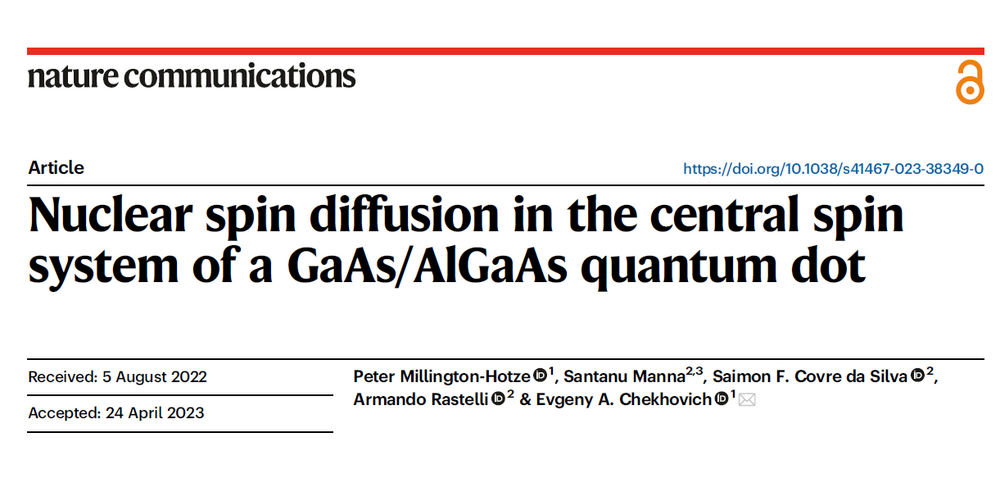
The spin diffusion concept provides a classical description of a purely quantum-mechanical evolution in inhomogeneously polarized many-body systems such as nuclear spin lattices. The central spin of a localized electron alters nuclear spin diffusion in a way that is still poorly understood. Here, spin diffusion in a single GaAs/AlGaAs quantum dot is witnessed in the most direct manner from oscillatory spin relaxation dynamics. Electron spin is found to accelerate nuclear spin relaxation, from which we conclude that the long-discussed concept of a Knight-field-gradient diffusion barrier does not apply to GaAs epitaxial quantum dots. Our experiments distinguish between non-diffusion relaxation and spin diffusion, allowing us to conclude that diffusion is accelerated by the central electron spin. Such acceleration is observed up to unexpectedly high magnetic fields – we propose electron spin-flip fluctuations as an explanation. Diffusion-limited nuclear spin lifetimes range between 1 and 10 s, which is sufficiently long for quantum information storage and processing.
*********************************************************************************************************************************************************************************************************************************************************************************************
L. Zaporski, N. Shofer, J. H. Bodey, S. Manna, G. Gillard, M. Hayhurst Appel, C. Schimpf, S. F. Covre da Silva, J. Jarman, G. Delamare, G. Park, U. Häusler, E. A. Chekhovich, A. Rastelli, D. A. Gangloff, M. Atatüre, C. Le Gall
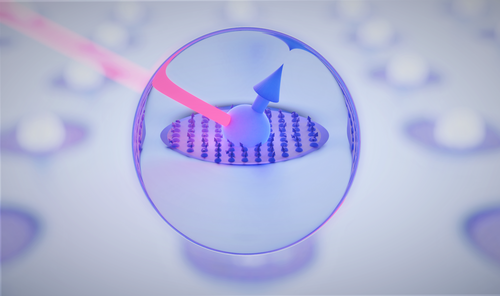 © Leon Zaporski, University of Cambridge
© Leon Zaporski, University of Cambridge
Combining highly coherent spin control with efficient light-matter coupling offers great opportunities for quantum communication and computing. Optically active semiconductor quantum dots have unparalleled photonic properties but also modest spin coherence limited by their resident nuclei. The nuclear inhomogeneity has thus far bound all dynamical decoupling measurements to a few microseconds. Here, we eliminate this inhomogeneity using lattice-matched GaAs–AlGaAs quantum dot devices and demonstrate dynamical decoupling of the electron spin qubit beyond 0.113(3) ms. Leveraging the 99.30(5)% visibility of our optical π-pulse gates, we use up to Nπ = 81 decoupling pulses and find a coherence time scaling of N0.75(2)π. This scaling manifests an ideal refocusing of strong interactions between the electron and the nuclear spin ensemble, free of extrinsic noise, which holds the promise of lifetime-limited spin coherence. Our findings demonstrate that the most punishing material science challenge for such quantum dot devices has a remedy and constitute the basis for highly coherent spin–photon interfaces.
*********************************************************************************************************************************************************************************************************************************************************************************************
B. U. Lehner, T. Seidelmann, G. Undeutsch, C.Schimpf, S. Manna, M. Gawelczyk, S. F. Covre da Silva, X. Yuan, S. Stroj, D. E. Reiter,V. M. Axt, A. Rastelli
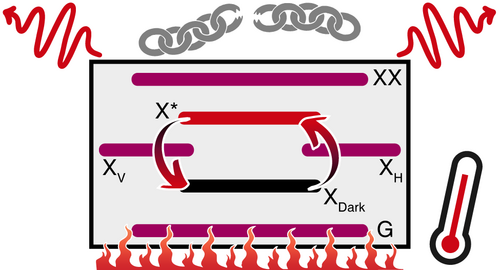 ©Barbara Lehner
©Barbara Lehner
Entangled photon pairs are essential for a multitude of quantum photonic applications. To date, the best performing solid-state quantum emitters of entangled photons are semiconductor quantum dots operated around liquid-helium temperatures. To favor the widespread deployment of these sources, it is important to explore and understand their behavior at temperatures accessible with compact Stirling coolers. Here we study the polarization entanglement among photon pairs from the biexciton–exciton cascade in GaAs quantum dots at temperatures up to ∼65 K. We observe entanglement degradation accompanied by changes in decay dynamics, which we ascribe to thermal population and depopulation of hot and dark states in addition to the four levels relevant for photon pair generation. Detailed calculations considering the presence and characteristics of the additional states and phonon-assisted transitions support the interpretation. We expect these results to guide the optimization of quantum dots as sources of highly entangled photons at elevated temperatures.
*********************************************************************************************************************************************************************************************************************************************************************************************
C. Schimpf, M. Reindl, D. Huber, B. Lehner, S. Filipe Covre da Silva, S. Manna, M. Vyvlecka, P. Walther, A. Rastelli
Quantum cryptography with highly entangled photons from semiconductor quantum dots, opens an external URL in a new window
Sci. Adv. 7, eabe8905 (2021).
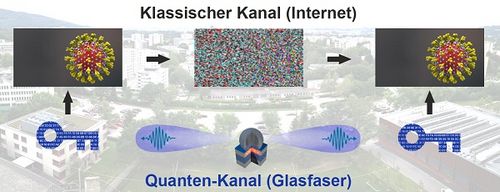

*********************************************************************************************************************************************************************************************************************************************************************************************
The cover design of the article Bright Single Photon Emission from Quantum Dots Embedded in a Broadband Planar Optical Antenna, opens an external URL in a new window by H. Huang, S. Manna, C. Schimpf, M. Reindl, X. Yuan, Y. Zhang, S. Covre da Silva and A. Rastelli (Adv. Optical Mater. 2001490, 2021) has been featured on the inside cover of the issue of "Advanced Optical Materials" 7, 2021.
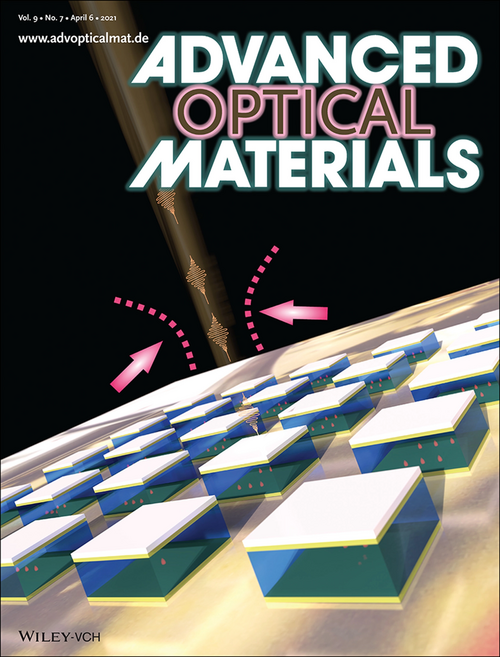
*********************************************************************************************************************************************************************************************************************************************************************************************
F. Basso Basset, F. Salusti, L. Schweickert, M. Rota, D. Tedeschi, S. Filipe Covre da Silva, E. Roccia, V. Zwiller, K. Jöns, A. Rastelli, R. Trotta
Quantum teleportation with imperfect quantum dots, opens an external URL in a new window
npj Quantum Information 7 (2021)
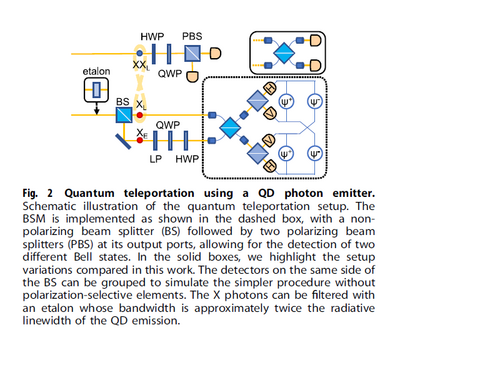
*********************************************************************************************************************************************************************************************************************************************************************************************
E. A. Chekhovich, S. Filipe Covre da Silva, A. Rastelli
Nature Nanotechnology 15, 999-1004 (2020).
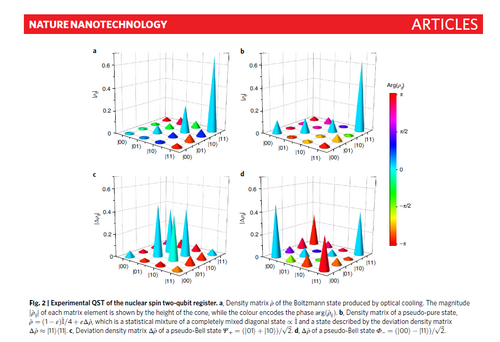
Epitaxial quantum dots (QDs) have long been identified as promising charge spin qubits offering an efficient interface to quantum light and advanced semiconductor nanofabrication technologies. However, charge spin coherence is limited by interaction with the nanoscale ensemble of atomic nuclear spins, which is particularly problematic in strained self-assembled dots. Here, we use strain-free GaAs/AlGaAs QDs, demonstrating a fully functioning two-qubit quantum register using the nanoscale ensemble of arsenic quadrupolar nuclear spins as its hardware. Tailored radio-frequency pulses allow quantum state storage for up to 20 ms, and are used for few-microsecond single-qubit and two-qubit control gates with fidelities exceeding 97%. Combining long coherence and high-fidelity control with optical initialization and readout, we implement benchmark quantum computations such as Grover’s search and the Deutsch–Jozsa algorithm. Our results identify QD nuclei as a potential quantum information resource, which can complement charge spins and light particles in future QD circuits.
*********************************************************************************************************************************************************************************************************************************************************************************************
J.Liu, R. Su, Y. Wei, B. Yao, S. F. Covre da Silva, Y. Yu, J. Iles-Smith, K. Srinivasan, A. Rastelli, J. Li, X. Wang
Nature Nanotechnology 14, 586–593 (2019).
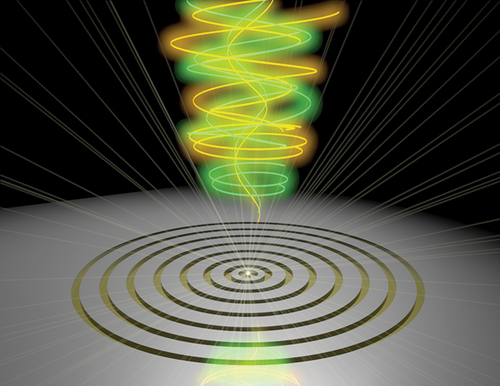 ©Toan T. Tran (https://www.nature.com/articles/s41565-019-0440-z/figures/1)
©Toan T. Tran (https://www.nature.com/articles/s41565-019-0440-z/figures/1)
*********************************************************************************************************************************************************************************************************************************************************************************************
M.Reindl, D. Huber, C. Schimpf, S. Filipe Covre da Silva, M. Rota, H. Huang, V. Zwiller, K. Jöns, A. Rastelli, R. Trotta
Sci. Adv. 4, eaau1255 (2018).
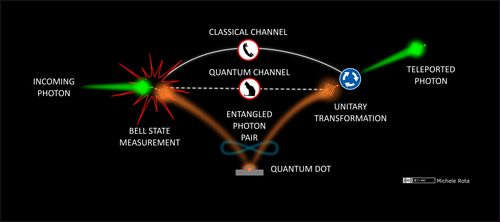
All-optical quantum teleportation lies at the heart of quantum communication science and technology. This quantum phenomenon is built up around the nonlocal properties of entangled states of light that, in the perspective of real-life applications, should be encoded on photon pairs generated on demand. Despite recent advances, however, the exploitation of deterministic quantum light sources in push-button quantum teleportation schemes remains a major open challenge. Here, we perform an important step toward this goal and show that photon pairs generated on demand by a GaAs quantum dot can be used to implement a teleportation protocol whose fidelity violates the classical limit (by more than 5 SDs) for arbitrary input states. Moreover, we develop a theoretical framework that matches the experimental observations and that defines the degree of entanglement and indistinguishability needed to overcome the classical limit independently of the input state. Our results emphasize that on-demand solid-state quantum emitters are one of the most promising candidates to realize deterministic quantum teleportation in practical quantum networks.
*********************************************************************************************************************************************************************************************************************************************************************************************
Xueyong Yuan, Fritz Weyhausen-Brinkmann, Javier Martín-Sánchez, Giovanni Piredda, Vlastimil Křápek, Yongheng Huo, Huiying Huang, Christian Schimpf, Oliver G. Schmidt, Johannes Edlinger, Gabriel Bester, Rinaldo Trotta, Armando Rastelli
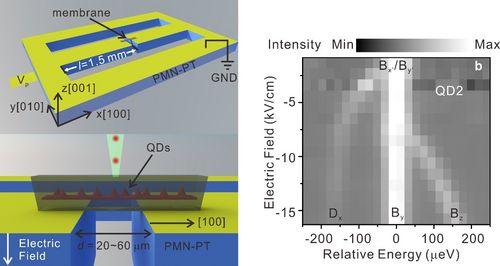 By using a novel piezoelectric actuator featuring geometric strain amplification, we have demonstrated that the natural quantization axis of strain-free GaAs quantum dots can be flipped to lie in the growth plane via moderate uniaxial stress. Together with the computational results, our work illustrate that uniaxial stress could be the right method to obtain quantum-light sources with ideally oriented transition dipoles and enhanced oscillator strengths for integrated quantum photonics.
By using a novel piezoelectric actuator featuring geometric strain amplification, we have demonstrated that the natural quantization axis of strain-free GaAs quantum dots can be flipped to lie in the growth plane via moderate uniaxial stress. Together with the computational results, our work illustrate that uniaxial stress could be the right method to obtain quantum-light sources with ideally oriented transition dipoles and enhanced oscillator strengths for integrated quantum photonics.
*********************************************************************************************************************************************************************************************************************************************************************************************
Daniel Huber, Marcus Reindl, Saimon Filipe Covre da Silva, Christian Schimpf, Javier Martín-Sánchez, Huiying Huang, Giovanni Piredda, Johannes Edlinger, Armando Rastelli, and Rinaldo Trotta:
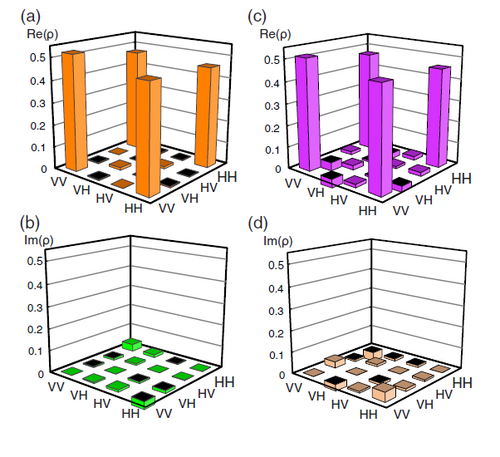
Entangled photon pairs are a key resource for quantum communication. We have now achieved the highest degree of polarization entanglement for photon pairs emitted by quantum dots by combining: 1) High-quality GaAs quantum dots grown by molecular beam epitaxy at our institute and embedded in planar cavities for enhanced light extraction, 2) resonant two-photon excitation for on demand operation, and 3) micro-structured piezoelectric actuators for removing the effect of residual anisotropy in the quantum dot potential. This work shows that quantum dots have the potential to fulfill the criteria of a perfect entangled-photon source.
*********************************************************************************************************************************************************************************************************************************************************************************************
L. Schweickert, K. D. Jöns, K. D. Zeuner, S. F. Covre da Silva, H. Huang, T. Lettner, M. Reindl, J. Zichi, R. Trotta, A. Rastelli, V. Zwiller:
Our collaborators at KTH Stockholm demonstrated an unprecedented single photon purity in the solid-state which exceeds the performance of any available single photon source to date. The used quantum dot source was grown in Linz.
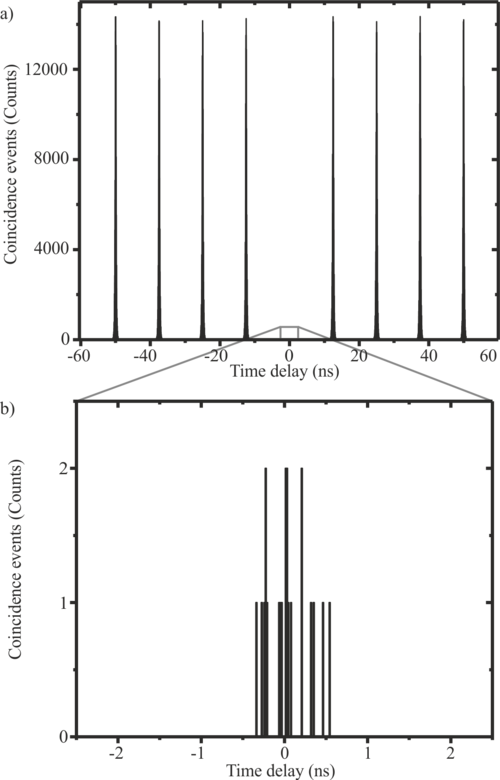
*********************************************************************************************************************************************************************************************************************************************************************************************